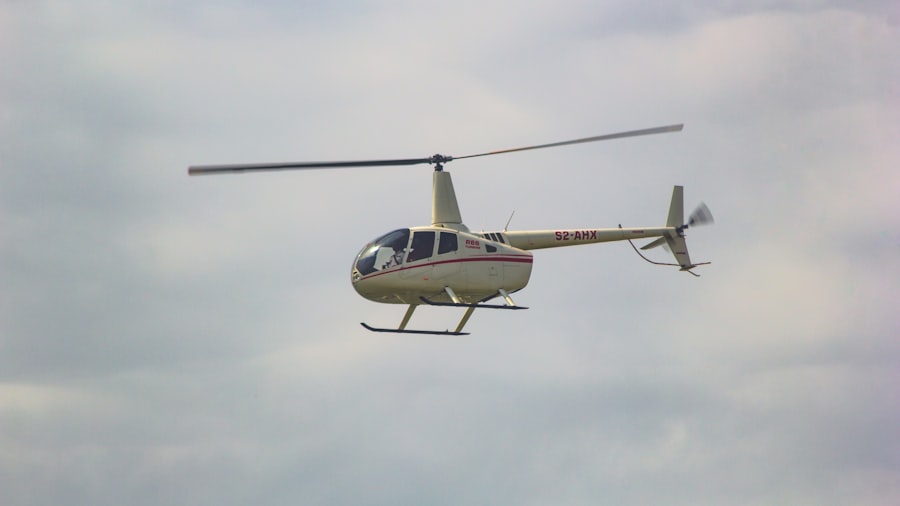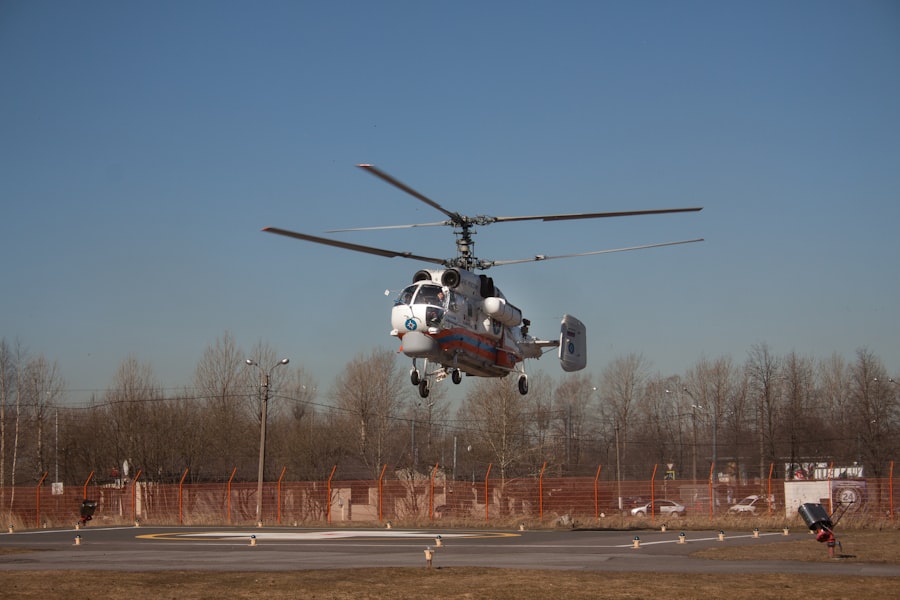Private helipads have emerged as a symbol of luxury and convenience, catering to individuals and businesses that require rapid transportation solutions. These facilities allow for the quick and efficient movement of people and goods, significantly reducing travel time compared to traditional ground transportation. The appeal of private helipads is particularly pronounced in urban areas where traffic congestion can lead to substantial delays.
For affluent individuals, business executives, and emergency services, the ability to take off and land directly at a private location can be invaluable. The construction of a private helipad is not merely about having a landing spot; it involves a comprehensive understanding of aviation regulations, safety standards, and site-specific considerations. The design must accommodate various helicopter types, ensuring that the structure can support the weight and operational requirements of these aircraft.
Furthermore, the location of the helipad must be strategically chosen to minimize noise pollution and comply with local zoning laws. As such, the decision to build a private helipad is often accompanied by a thorough analysis of both the benefits and the costs involved.
Initial Construction Costs
The initial construction costs of a private helipad can vary significantly based on several factors, including location, design specifications, and regulatory requirements. On average, the cost of constructing a basic helipad can range from $100,000 to over $1 million. This wide range reflects the diversity in materials used, the complexity of the design, and the geographical challenges presented by the site.
For instance, a helipad built on a flat, open area may incur lower costs than one constructed on a hillside or in an urban environment where additional structural reinforcements are necessary. In addition to the physical construction costs, there are also expenses related to obtaining permits and conducting environmental assessments. Local authorities often require detailed plans that demonstrate compliance with safety regulations and zoning laws.
These processes can be time-consuming and may necessitate hiring specialized consultants or engineers, further inflating initial costs. Moreover, if the helipad is intended for commercial use, additional infrastructure such as hangars or fueling stations may be required, adding to the overall financial outlay.
Ongoing Maintenance and Repairs

Once a private helipad is operational, ongoing maintenance becomes a critical aspect of ownership. Regular inspections are essential to ensure that the surface remains in good condition and that safety features are functioning correctly. This includes checking for wear and tear on landing surfaces, ensuring that lighting systems are operational, and maintaining any safety barriers or signage.
Depending on usage frequency and environmental conditions, maintenance costs can range from a few thousand dollars annually to tens of thousands for more heavily used facilities. In addition to routine maintenance, unexpected repairs may arise due to weather-related damage or wear from helicopter landings. For example, extreme weather conditions such as heavy rain or snow can lead to erosion or surface degradation, necessitating immediate repairs to maintain safety standards.
Owners must also consider the potential need for upgrades over time as technology advances or as regulations change. This ongoing commitment to maintenance and repair is crucial not only for safety but also for preserving the value of the investment in the helipad.
Insurance and Liability Costs
Insurance is another significant cost associated with owning a private helipad. Given the inherent risks involved in aviation operations, securing adequate liability coverage is essential. Insurance premiums can vary widely based on factors such as location, usage frequency, and the type of helicopters that will be using the facility.
On average, owners might expect to pay anywhere from $2,000 to $10,000 annually for liability insurance alone. This coverage protects against potential claims arising from accidents or injuries that could occur on or around the helipad. In addition to liability insurance, property insurance is also necessary to cover damages to the helipad itself.
This could include coverage for natural disasters, vandalism, or other unforeseen events that could compromise the integrity of the structure. Owners should also consider additional coverage options that address specific risks associated with helicopter operations, such as hangar keepers’ liability if they plan to store helicopters on-site. The cumulative cost of insurance can represent a significant portion of the overall budget for maintaining a private helipad.
Regulatory Compliance and Inspections
Regulatory compliance is a critical aspect of operating a private helipad. Various federal, state, and local regulations govern aviation operations, including safety standards set forth by organizations such as the Federal Aviation Administration (FAA) in the United States. Owners must ensure that their helipads meet all applicable regulations regarding design, construction, and operational procedures.
This often involves obtaining multiple permits and undergoing inspections by regulatory authorities before the helipad can be deemed operational. Regular inspections are not only mandated by law but are also essential for ensuring ongoing safety and compliance with evolving regulations. These inspections may include assessments of structural integrity, safety equipment functionality, and adherence to noise abatement measures.
The costs associated with these inspections can add up over time, particularly if issues are identified that require remediation before compliance can be achieved. Staying abreast of regulatory changes is crucial for owners to avoid potential fines or operational shutdowns due to non-compliance.
Staffing and Operational Costs

Personnel Costs
Private helipad owners must consider the operational costs of staffing, which can vary depending on the scale of operations. They may need to hire personnel for roles such as ground crew members, maintenance staff, and administrative personnel. Salaries for these positions can vary widely based on experience and location, adding thousands of dollars to annual operating expenses.
Training and Compliance
Staff training is essential to ensure compliance with regulatory requirements and to minimize risks associated with helicopter operations. This training incurs additional costs, which can further impact the overall financial viability of maintaining a private helipad.
Commercial Operations and Customer Service
If the helipad is used for commercial purposes, such as air taxi services, additional staffing considerations arise related to customer service and logistics management. This cumulative effect of staffing needs can significantly impact the overall financial viability of maintaining a private helipad.
Environmental Impact and Mitigation Costs
The environmental impact of private helipads is an increasingly important consideration in their planning and operation. Helicopter operations can contribute to noise pollution and may disrupt local wildlife habitats. As such, many jurisdictions require environmental assessments before permitting construction.
These assessments evaluate potential impacts on local ecosystems and may necessitate mitigation measures to minimize adverse effects. Mitigation costs can vary widely depending on the findings of environmental assessments. For example, if a proposed helipad site is found to be in proximity to sensitive wildlife habitats or residential areas, owners may be required to implement noise reduction technologies or create buffer zones to protect local ecosystems.
These measures can add significant costs to both initial construction and ongoing operations. Additionally, owners may need to invest in monitoring programs to ensure compliance with environmental regulations over time.
Considerations for Potential Cost Savings
While owning a private helipad entails numerous costs, there are several strategies that owners can employ to achieve potential savings. One approach is to carefully select the location of the helipad; choosing a site that minimizes construction challenges can significantly reduce initial expenses. Additionally, collaborating with experienced contractors who specialize in aviation infrastructure can help streamline the construction process and avoid costly delays.
Another avenue for cost savings lies in optimizing operational efficiency. For instance, implementing a scheduling system that maximizes helicopter usage can reduce idle time and associated costs. Owners might also explore partnerships with local businesses or other helicopter operators to share resources such as maintenance facilities or ground crew personnel.
By leveraging existing infrastructure or services within their community, owners can mitigate some of the ongoing operational expenses associated with maintaining a private helipad. Furthermore, staying informed about advancements in technology can lead to long-term savings as well. Innovations in helicopter design may result in more fuel-efficient models that reduce operational costs over time.
Additionally, investing in sustainable practices—such as utilizing renewable energy sources for lighting—can lower utility expenses while also enhancing environmental compliance efforts. In conclusion, while private helipads offer unparalleled convenience and luxury for their owners, they come with a complex array of costs that must be carefully managed. From initial construction expenses through ongoing maintenance and regulatory compliance, each aspect requires thoughtful consideration and planning.
By understanding these financial implications and exploring potential cost-saving strategies, owners can make informed decisions that enhance both their operational efficiency and overall satisfaction with their investment in private aviation infrastructure.
FAQs
What is a private helipad?
A private helipad is a designated area for helicopters to take off and land, typically located on private property such as a residence, business, or private estate.
What are the costs associated with maintaining a private helipad?
The costs of maintaining a private helipad can include initial construction or installation costs, ongoing maintenance and repairs, insurance, lighting and signage, and any necessary permits or regulatory compliance.
What are the regulatory requirements for a private helipad?
Regulatory requirements for a private helipad can vary by location, but typically include obtaining permits, adhering to zoning and land use regulations, meeting safety and environmental standards, and complying with aviation regulations.
What are the safety considerations for a private helipad?
Safety considerations for a private helipad include proper maintenance of the landing surface, ensuring adequate lighting and signage, implementing security measures, and conducting regular safety inspections and drills.
Are there any environmental considerations for a private helipad?
Environmental considerations for a private helipad may include managing noise pollution, minimizing disruption to local wildlife and ecosystems, and complying with any relevant environmental regulations or restrictions.

